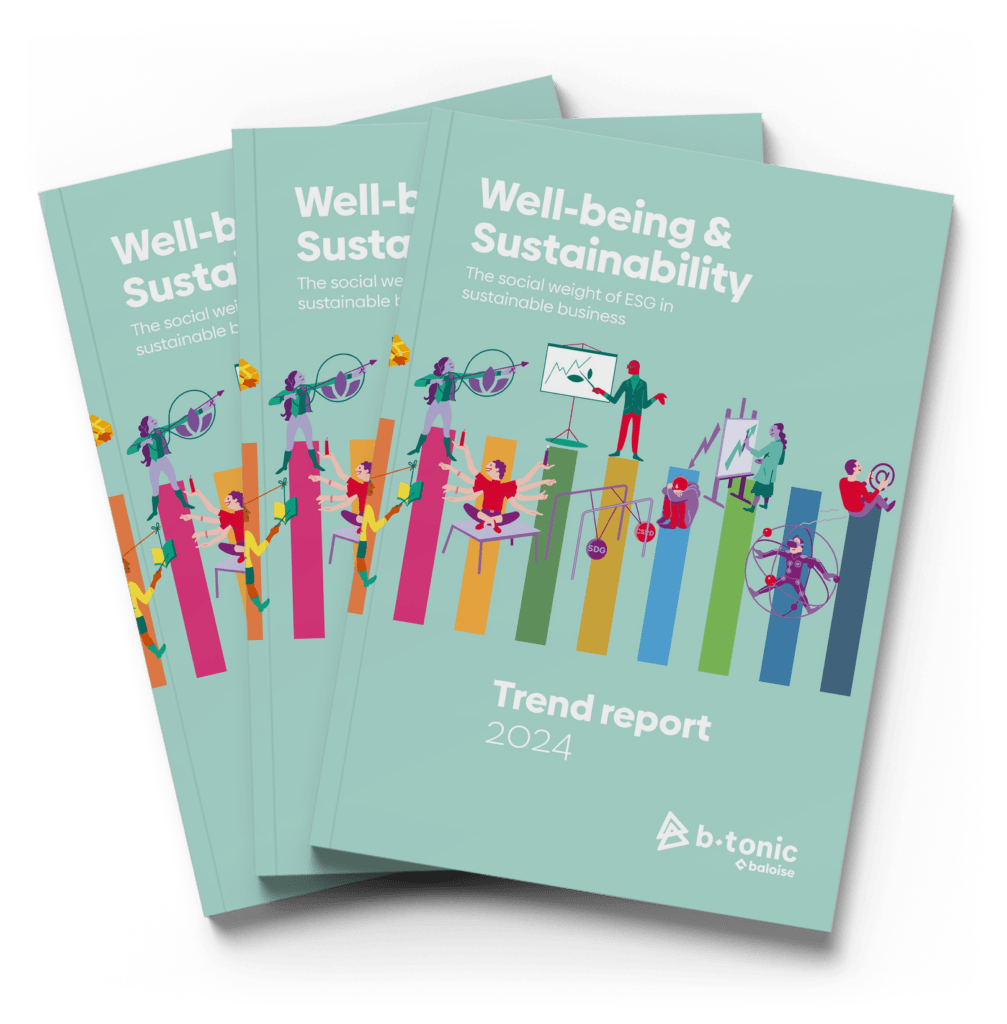Exploring the leadership role in mental health in the workplace.
Today, employers are increasingly facing employees who are absent due to mental reasons. This includes depression and stress-related reasons for absenteeism, such as burnout and anxiety disorders. The overall picture of cause and solution is complex.
Research increasingly indicates a crucial role for managers. This applies to both the prevention of absenteeism and managing the consequences of absence and the follow-up of absentees and their return to work. Unfortunately, prevention and reintegration of long-term sick employees are usually not part of the explicit task or knowledge package of the average manager. It’s high time to look at how managers can be strengthened in prevention.
What are their needs and requirements, what barriers do they encounter, and what do they see as possible aids?
Researchers Eva Geluk and Kathleen Vangronsvelt of Antwerp Management School joined forces with Bpost and B-Tonic. The ultimate goal of the three-year research collaboration Wellbeing Works is to create knowledge and evidence-based solutions for organizations and their stakeholders In a series of blogs, we will keep you informed about our findings and provide you with practice-relevant insights.
Mental Well-being at Work: The Mental Health Continuum and the Role of the Manager.
Our jobs are often mentally demanding, both practically and psychosocially. Therefore, it’s no surprise that mental health is becoming increasingly important for employee well-being and productivity. But what are we talking about when we talk about mental health?
A useful tool is the “Mental Health Continuum.” This model helps us see mental health as a fluctuating concept, as the figure below shows. We all find ourselves at a certain point on this continuum (Kelloway, Dimoff, & Gilbert, 2023).

Recognizing the dynamic nature of mental health can be a game-changer for organizations committed to prevention and promoting a supportive work environment. Below, we delve deeper into the role that managers can play and how diverse the health experiences of both employees and managers can be. To illustrate this diversity, we spoke with 56 managers over the past few months about how they experience mental-health prevention at work. What stood out is that few managers in our study referred to the green zone, namely proactive prevention. This is about promoting mental fitness. Many problems can be prevented by intervening in time, for example, on job design, job fit, autonomy, a good balance between energy drainers and energy givers, and a psychologically safe culture.
From the conversations, it appears that managers spend most of their time and energy in the white zone – when there are already problems. This zone indicates that there are mental struggles and that
timely intervention is required. In this phase, managers initially start a conversation. Sometimes they refer to social assistants, and external services may be contacted. If we want to tackle problems at an earlier stage, managers need to be more strongly supported. For example, by offering accessible resources and support mechanisms.
5 Main Concerns of Managers
1. “What does ‘prevention’ mean?
Managers often see prevention as something tackled when there are already problems. Although many do not hesitate to engage in conversations, there is sometimes a lack of knowledge about preventive measures, such as increasing resources and reducing hindering work demands.
2. “I can’t do it alone”
Managers experience varying degrees of support, both from the organization and their own managers. There is a need for improved collaboration between supportive functions and more consistent support from their own managers.
3. “There is a lack of a clear framework”
Organizational policy and vision play a crucial role. Managers emphasize the need for better implementation of existing initiatives, clear priorities, and well-considered choices, which can directly impact workload.
4. “Never enough time”
Time is identified as a significant barrier. There is a need for more time for conversations, both informal and formal. Time to follow up, and time to sufficiently train, guide, and support people in their job.
5. “I don’t know the full picture”
There is a lack of knowledge about the real causes of absenteeism, especially when it comes to mental health reasons. It is difficult to distinguish whether absence is due to private or work-related problems.
3 Key Words for Mental Health Prevention at Work
1. Awareness. Creating awareness of the mental health continuum is the foundation for prevention. If employees and leaders understand the spectrum of mental health experiences, this reduces stigma, encourages open dialogue, and promotes a culture of empathy.
2. Training. By investing in training and education programs, employees and managers are equipped to recognize signs of stress earlier. This enables them to take preventive measures and create a supportive environment for their colleagues.
3. Policy. Organizations committed to the prevention of mental health integrate policies that prioritize employee well-being. This includes clear protocols for dealing with mental issues, creating a psychologically safe environment, and opportunities to seek help without fear of judgment.
Organizations focused on a sustainable wellness policy ensure that mental well-being plays a central and strategic role. This is included in their social pillar of ESG. It is necessary to dare to work top-down, with specific attention to the structural support of managers. This includes clear guidelines for dealing with mental health issues, promoting a psychologically safe environment, and offering easily accessible resources without fear of stigmatization.
Siviglia Berto – Managing Director B-Tonic
The quest for an effective well-being policy is not an easy exercise. Within a large company like bpost, with many different profiles and a great diversity, it is no different. An academic and practical underpinning of how you can better shape the well-being policy offers us great added value and confidence. Confidence to better define and support the role of the manager within that policy, confidence to especially better develop the primary preventive role they can have.
Kelloway, E. K., Dimoff, J. K., & Gilbert, S. (2023). Mental Health in the Workplace. Annual review of organizational psychology and organizational behavior, 10(1), 363-387.
doi:10.1146/annurev-orgpsych-120920-050527





